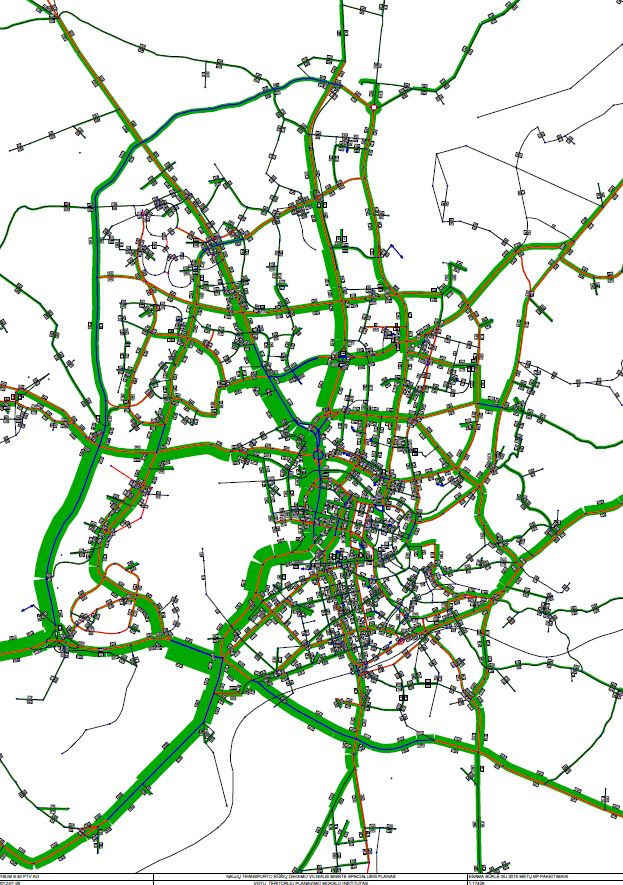Environmental Engineering
Departments
Research Institute of Territorial Planning
Modeling of traffic flow
Modeling of traffic flow
Vehicle traffic growth has become one of the most important problems in Lithuanian affecting the urban environment and quality of life. In order to improve the transport infrastructure is often faced with the dilemma: which option to choose, that they will be more efficient and more economical. Such decisions can only be accepted by using traffic flow modeling and the appropriate software. Spatial planning specialists work with EMME /2, PTV Vision, Sidra, Transyt and other software packages.
Simulation of traffic flow is divided into two fundamentally different levels: macro and micro traffic flow simulation. Macro-models help to statically predict the number of trips in the city streets and travel distribution network (Figure 1. Vilnius traffic flow modelling). This simulation allows you to compare the new transport infrastructure development options and select the best alternatives.

1 Figure. Vilnius traffic flow modelling
Micro-models allow highly accurate modeling of the behavior of vehicles in the local city street network. Developed models are helpful when you want to select types of junctions and their configurations, traffic patterns developing areas (Figure 2. / Visualization of traffic organization in Šnipiškės, Vilnius)
Each of these levels is associated with a specific data needs, the more detailed level - the more data is needed.
These methods allow you to evaluate the different concepts of urban transport system.
Research institute of territorial planning (TPMI) provides advice on the development of communication systems. Have many international and domestic experience in the development of transport infrastructure development projects. Employees are prepared Marijampolė, Vilnius, Pasvalys macro models, more than 20 sites for micro models.
-
- Page administrators:
- Rasa Ušpalytė-Vitkūnienė
- Laura Ladietaitė
- Karolina Kardokaitė
- Ugnė Daraškevičiūtė


